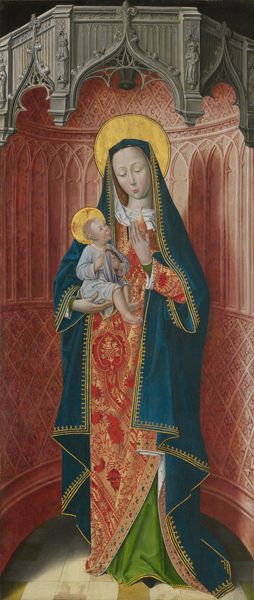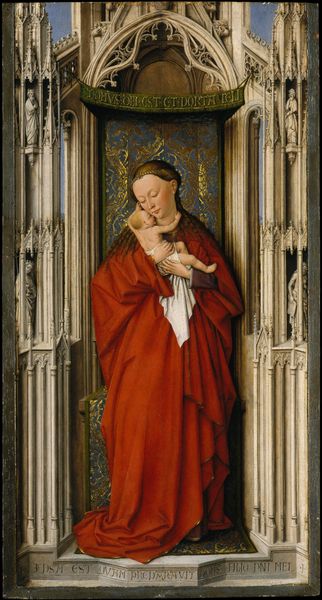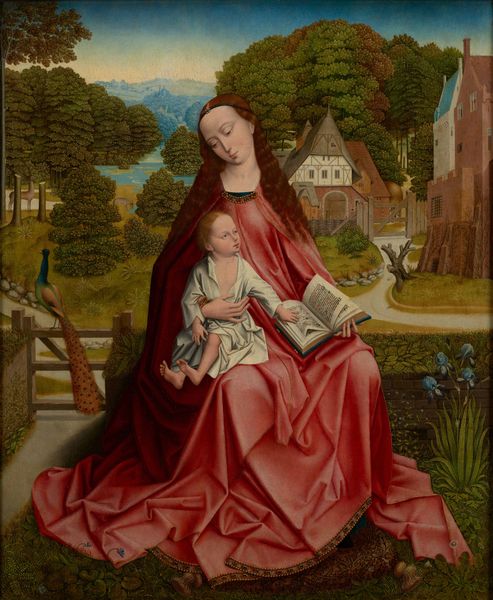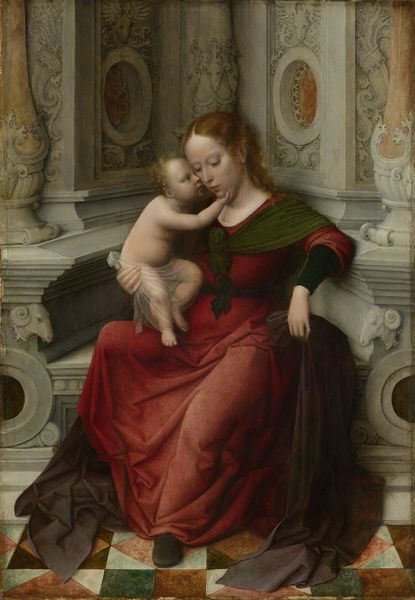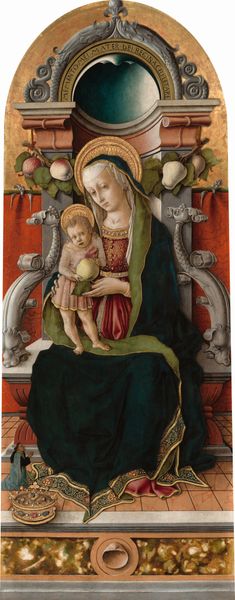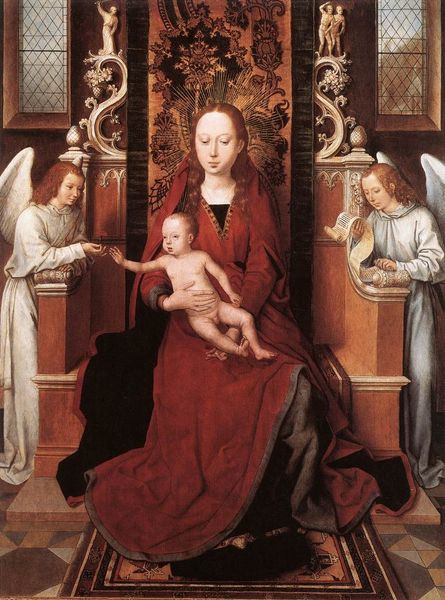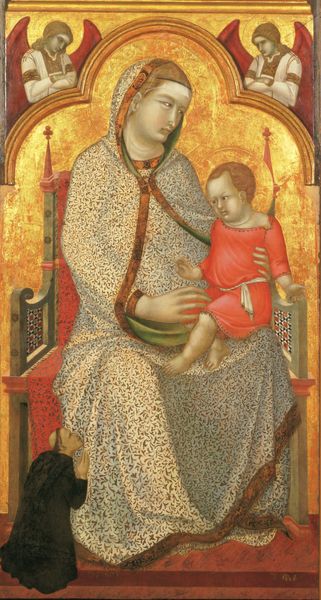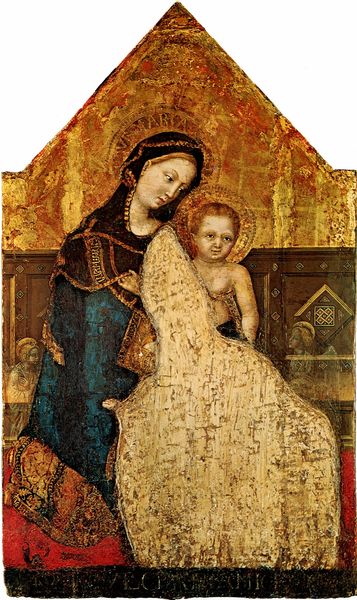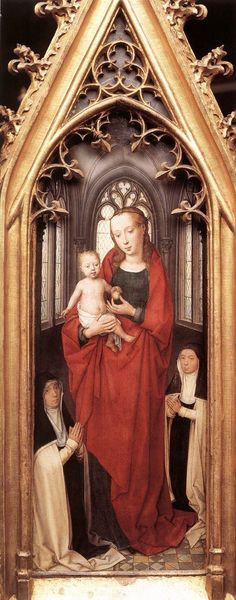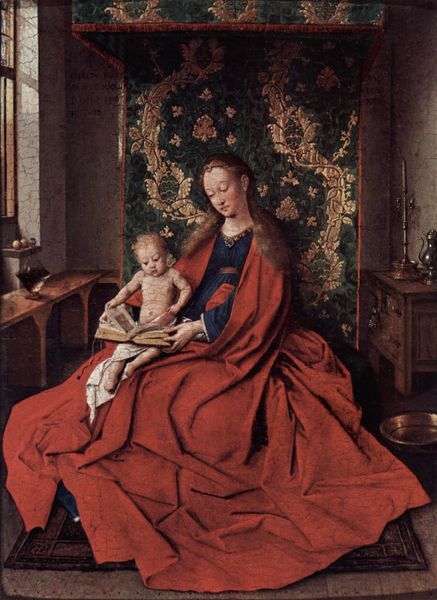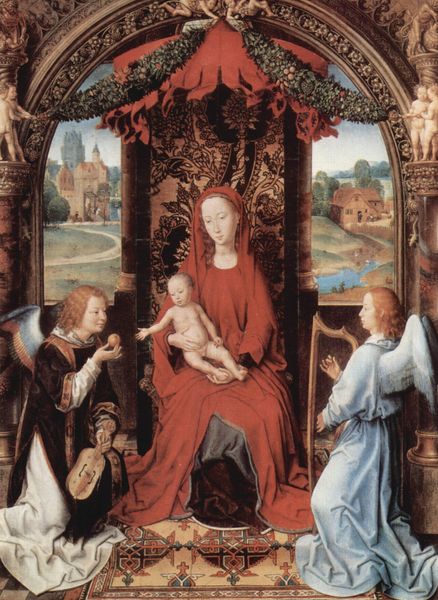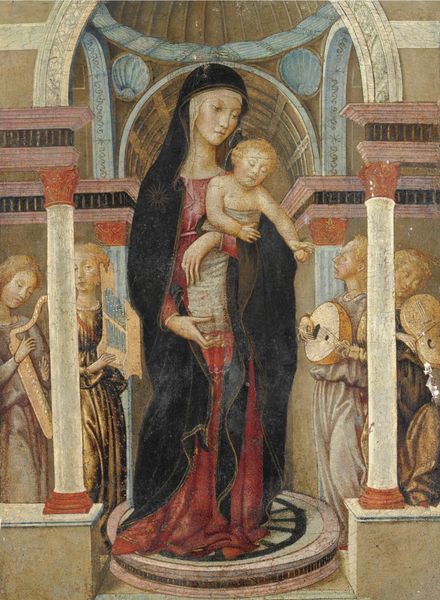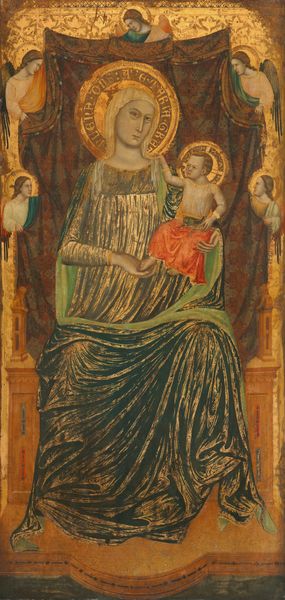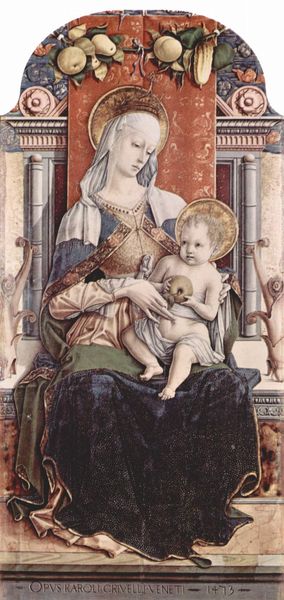
tempera, painting
#
portrait
#
allegory
#
tempera
#
painting
#
figuration
#
costume
#
history-painting
#
italian-renaissance
Copyright: Public domain
Curator: Directly in front of us we have Stefan Lochner's “The Virgin Crowned by Angels,” painted around 1450, rendered in tempera. Editor: The overwhelming impression is one of solemnity. The Virgin's downcast eyes and the muted palette, dominated by that heavy red robe, create an atmosphere of serene contemplation, but tinged with melancholy. Curator: It's a pivotal image in understanding the cultural values of the time, specifically the veneration of the Virgin Mary as a symbol of purity and divine grace. Lochner was working within the artistic conventions of the Cologne school, catering to the devotional needs of the wealthy merchant class. Editor: Look closer. Note how the roses scattered on the ground almost appear as tear drops falling to the ground. And the golden crown, hovering somewhat precariously above her head; is it a symbol of divine endorsement or perhaps a gilded cage? The ambivalence in the pose conveys something about the feminine experience of authority and motherhood that’s particularly poignant. Curator: Yes, and her regality would have undoubtedly been used in civic and religious events in Cologne. One could also ask what function such iconography served in its original context, solidifying established social orders or as potential subversion. Editor: Also consider the symbolic language embedded here: the angels, barely visible against the dark backdrop, quietly placing the crown, each element carefully constructed to elicit a specific emotional and spiritual response from the viewer. The contrast with her red clothing and long blonde hair is powerful as well. Curator: The symbolic potency of Marian imagery like this cannot be understated. Its effect and appeal helped shape social beliefs. How many women saw in it something that was possible in their lives, versus simply what was preached to them by their priest or the powerful leaders? Editor: Reflecting on Lochner’s “Virgin” is ultimately to encounter the complexities of human experience; to confront universal themes of sacrifice, faith, power, and redemption. It asks us, I think, to reconsider what constitutes strength and authority, especially in religious imagery. Curator: Indeed. Lochner's work helps us see what’s possible in society: not just images that solidify an established social order, but as sites for a range of interpretations of female and religious roles.
Comments
No comments
Be the first to comment and join the conversation on the ultimate creative platform.
